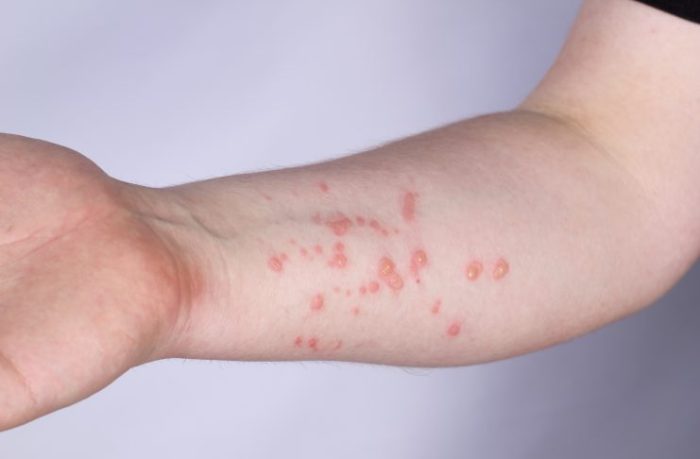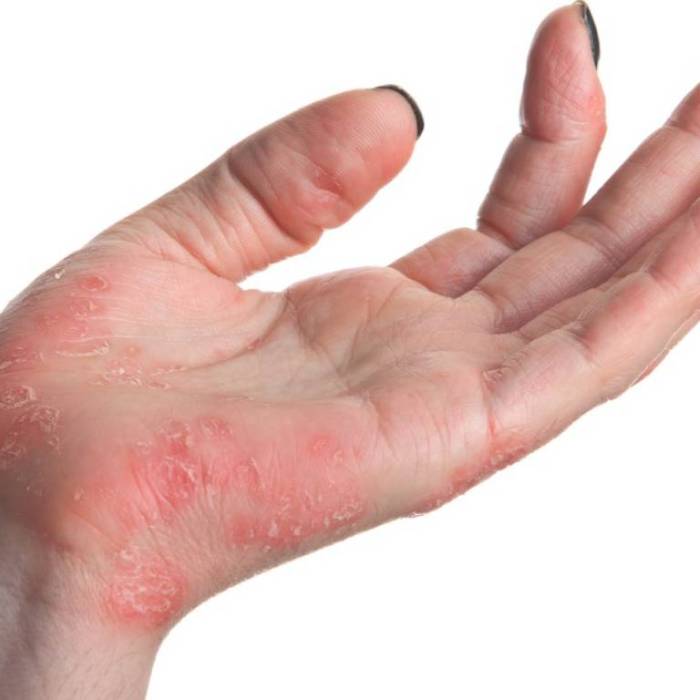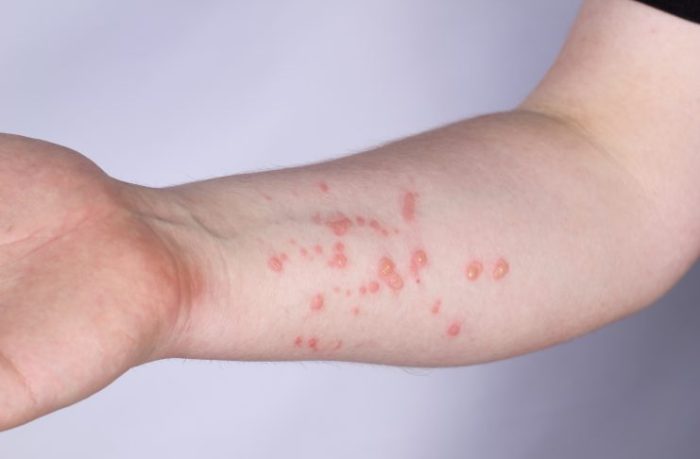High blood pressure and PCOS: understanding the connection is crucial for women’s health. High blood pressure, or hypertension, is a condition where the force of blood against your artery walls is consistently too high. Polycystic ovary syndrome (PCOS) is a hormonal disorder that affects women of reproductive age, often leading to irregular periods, excess hair growth, and difficulty getting pregnant.
This article explores the common link between these two conditions, examining risk factors, diagnosis, management strategies, and potential complications. It’s important to know that this information isn’t a substitute for professional medical advice.
This comprehensive guide delves into the intricate relationship between high blood pressure and PCOS, shedding light on the underlying mechanisms, risk factors, and management strategies. We will examine the potential physiological pathways connecting these two conditions, and provide insights into the importance of early diagnosis and effective treatment. Understanding the nuances of this connection is essential for empowering women to take proactive steps toward managing their health.
Introduction to High Blood Pressure and PCOS

High blood pressure, also known as hypertension, is a condition where the force of blood against your artery walls is consistently too high. This persistent pressure can strain your heart and blood vessels, increasing your risk of serious health problems like heart disease, stroke, and kidney disease. Understanding the factors that contribute to high blood pressure is crucial for prevention and management.Polycystic ovary syndrome (PCOS) is a hormonal disorder common among women of reproductive age.
It’s characterized by an imbalance of reproductive hormones, often leading to irregular periods, difficulty conceiving, and the development of small cysts on the ovaries. While PCOS has a range of symptoms, it can also significantly impact a woman’s overall health and well-being.A notable connection exists between high blood pressure and PCOS. Women with PCOS often have an increased risk of developing high blood pressure, possibly due to shared underlying hormonal and metabolic factors.
This link highlights the importance of addressing both conditions proactively. Many women with PCOS are diagnosed with high blood pressure at a relatively young age, further emphasizing the need for regular checkups and lifestyle modifications.Both high blood pressure and PCOS are prevalent conditions in women. The exact prevalence figures vary based on different studies and populations, but it’s clear that a significant portion of women are affected by at least one of these conditions.
These statistics highlight the importance of understanding the potential connection between the two conditions and the need for preventive measures.
Prevalence of High Blood Pressure and PCOS in Women
The prevalence of high blood pressure and PCOS varies based on factors like age, ethnicity, and lifestyle. Studies have shown that women with PCOS often experience higher blood pressure readings compared to women without PCOS. This difference can be attributed to hormonal imbalances, insulin resistance, and other metabolic factors associated with PCOS.
Common Link Between High Blood Pressure and PCOS
A common link between high blood pressure and PCOS is the disruption of hormonal balance. The hormonal imbalances in PCOS can affect insulin sensitivity, leading to insulin resistance. Insulin resistance is a key factor in the development of high blood pressure. Furthermore, the chronic inflammation associated with PCOS may contribute to the development of high blood pressure. This inflammation can affect the lining of blood vessels, making them less elastic and increasing the risk of high blood pressure.
Symptoms Comparison
| Symptom | High Blood Pressure | PCOS |
|---|---|---|
| Elevated blood pressure readings | Often asymptomatic initially, but can lead to headaches, dizziness, or vision problems | Irregular periods, acne, excessive hair growth (hirsutism), weight gain, difficulty conceiving |
| Headaches | Potentially, as a symptom of high blood pressure | Possible, but less directly related to PCOS; can be due to other factors |
| Dizziness | Potentially, as a symptom of high blood pressure | Possible, but less directly related to PCOS; can be due to other factors |
| Vision changes | Potentially, as a symptom of high blood pressure | Not a typical symptom of PCOS |
| Excessive hair growth (hirsutism) | Not a direct symptom | A key symptom, often noticeable on the face, chest, and back |
| Weight gain | Possible, but not a defining symptom | A common symptom, often due to hormonal imbalances and insulin resistance |
| Irregular periods | Not a direct symptom | A hallmark symptom, characterized by infrequent or prolonged periods |
| Difficulty conceiving | Not a direct symptom | A common symptom, due to hormonal imbalances |
Risk Factors and Mechanisms
High blood pressure, or hypertension, is a significant concern for women with Polycystic Ovary Syndrome (PCOS). Understanding the interplay between these two conditions is crucial for effective management and prevention. This exploration delves into the potential risk factors and physiological mechanisms that link PCOS and hypertension, highlighting the importance of early detection and proactive strategies.
Potential Risk Factors for Hypertension in PCOS
Several factors contribute to the increased risk of hypertension in women with PCOS. These include lifestyle choices, hormonal imbalances, and metabolic abnormalities. The interplay of these factors creates a complex web that can lead to elevated blood pressure.
- Insulin Resistance: A core feature of PCOS is insulin resistance, a condition where the body’s cells do not respond effectively to insulin. This leads to elevated insulin levels in the bloodstream, which can, in turn, contribute to increased blood pressure.
- Obesity: Excess weight, a common symptom in PCOS, is strongly linked to hypertension. Obesity increases the workload on the cardiovascular system, leading to higher blood pressure.
- Inflammation: Chronic low-grade inflammation is often present in women with PCOS. This inflammatory response can contribute to the development of both insulin resistance and hypertension.
- Hyperandrogenism: Elevated levels of androgens, such as testosterone, are characteristic of PCOS. These elevated hormone levels can potentially contribute to insulin resistance and blood pressure changes, although the exact mechanisms are still being investigated.
- Age: As women with PCOS age, their risk of developing hypertension may increase, likely due to the cumulative effect of other risk factors.
Physiological Mechanisms Linking PCOS and Hypertension
The physiological mechanisms linking PCOS and hypertension are complex and not fully understood. However, several key pathways are implicated.
- Insulin Resistance Cascade: Elevated insulin levels in PCOS promote the production of certain hormones and factors that constrict blood vessels and increase sodium retention. This, in turn, increases blood pressure.
- Sympathetic Nervous System Activation: Women with PCOS may experience heightened sympathetic nervous system activity, leading to increased heart rate and vasoconstriction, which both contribute to elevated blood pressure.
- Inflammation and Oxidative Stress: Chronic inflammation and oxidative stress, often associated with PCOS, can damage blood vessels and contribute to hypertension.
- Endothelial Dysfunction: Impaired function of the endothelial cells lining blood vessels can lead to increased vasoconstriction and reduced vasodilation, contributing to elevated blood pressure.
Comparing Impact of Risk Factors
The impact of various risk factors on blood pressure levels in PCOS patients can vary. For example, obesity tends to have a more pronounced effect on blood pressure than insulin resistance in some cases.
Role of Insulin Resistance
Insulin resistance plays a pivotal role in the development of both PCOS and hypertension. It acts as a connecting link between these two conditions. Elevated insulin levels can lead to increased sodium retention and altered vascular function, ultimately contributing to hypertension.
High blood pressure can be a real concern, especially for those with PCOS. Finding healthy snacks that fit within a balanced diet, like those on the Mediterranean diet, can really help manage blood pressure. For example, exploring snacks on mediterranean diet can offer insights into nutritious options that are low in sodium and high in healthy fats, which can be beneficial for both blood pressure and PCOS symptoms.
Ultimately, these mindful choices can play a significant role in overall well-being when dealing with high blood pressure and PCOS.
| Risk Factor | Explanation | Impact on Blood Pressure |
|---|---|---|
| Insulin Resistance | Cells do not respond effectively to insulin. | Elevated insulin levels contribute to increased sodium retention and altered vascular function. |
| Obesity | Excess weight increases the workload on the cardiovascular system. | Increased workload on the heart and blood vessels can lead to higher blood pressure. |
| Inflammation | Chronic low-grade inflammation is present. | Can damage blood vessels and contribute to hypertension. |
| Hyperandrogenism | Elevated levels of androgens. | Potentially contributes to insulin resistance and blood pressure changes. |
Diagnosis and Screening
Navigating health concerns like high blood pressure and PCOS requires accurate diagnosis and proactive screening. Understanding the diagnostic procedures and recommended screening intervals is crucial for early detection and effective management. This knowledge empowers individuals to take control of their health and work with healthcare professionals to develop personalized strategies for prevention and treatment.High blood pressure and PCOS, while distinct conditions, can share risk factors and potentially impact each other.
Therefore, regular screening for both conditions in women with PCOS is particularly important. Early detection allows for timely interventions, which can lead to better health outcomes.
Diagnostic Procedures for High Blood Pressure
Diagnosing high blood pressure involves measuring blood pressure consistently over time. This process typically includes multiple readings taken during several office visits. A single elevated reading isn’t sufficient for diagnosis; a pattern of consistently high readings is essential. Healthcare providers utilize calibrated devices to obtain accurate measurements, ensuring consistent results across different visits. Blood pressure is reported as two numbers, systolic (the pressure when the heart beats) and diastolic (the pressure when the heart rests between beats).
Readings are typically classified according to established guidelines.
Diagnostic Procedures for PCOS
Diagnosing PCOS relies on a combination of clinical evaluation, physical examination, and laboratory tests. No single test definitively confirms PCOS; rather, a combination of signs and symptoms, along with laboratory results, are considered. Physical examination may reveal signs such as irregular periods, excess hair growth (hirsutism), and/or weight gain. A thorough medical history, including family history of PCOS, is also important.
Essential laboratory tests may include hormonal assessments, such as measuring levels of testosterone, LH (luteinizing hormone), and FSH (follicle-stimulating hormone). Ultrasound imaging of the ovaries can also be utilized to identify polycystic ovarian morphology (PCOM), which is a characteristic feature of PCOS.
Importance of Regular Screening for Both Conditions in Women with PCOS
Given the increased risk of developing high blood pressure in women with PCOS, regular screening is crucial. Early detection and management of high blood pressure can help prevent serious cardiovascular complications. Early identification of high blood pressure in women with PCOS allows for proactive interventions and helps prevent long-term health issues. This preventive approach is vital for overall well-being.
High blood pressure and PCOS can be a tricky combo. Finding the right balance is key, and one important nutrient to consider is magnesium. Knowing the different types of magnesium, like magnesium citrate, magnesium glycinate, and magnesium oxide, and how to choose the best one for your needs can be crucial. Understanding the various forms and their potential benefits is essential to managing your health, and can be particularly helpful in supporting blood pressure regulation.
Check out this resource to learn more about types of magnesium what they are and how to choose and how it might fit into your overall health plan for high blood pressure and PCOS.
Recommended Screening Intervals
Regular monitoring and screening are essential for both high blood pressure and PCOS. The frequency of these screenings depends on individual risk factors and health status. A healthcare provider will determine the optimal screening schedule for each patient based on their unique circumstances.
| Condition | Frequency |
|---|---|
| High Blood Pressure | Yearly or as advised by a healthcare provider |
| PCOS | Yearly or as advised by a healthcare provider, potentially more frequent if risk factors are present |
Management and Treatment Strategies: High Blood Pressure And Pcos
Managing both high blood pressure and PCOS requires a multifaceted approach focusing on lifestyle modifications, medication, and a strong doctor-patient partnership. Individualized plans are crucial, considering factors like age, overall health, and specific symptoms. A collaborative effort between patients and healthcare professionals is key to achieving optimal outcomes.
Lifestyle Modifications
Effective management of both high blood pressure and PCOS often begins with lifestyle changes. These changes are fundamental to improving overall health and can significantly reduce the need for medications in many cases. Adopting a healthy diet and incorporating regular exercise are crucial components of this approach.
- A balanced diet rich in fruits, vegetables, and whole grains is essential for both conditions. Limiting sodium intake is particularly important for managing high blood pressure, as excessive sodium consumption can elevate blood pressure levels. For PCOS, managing blood sugar levels and insulin resistance is critical, often achieved by reducing refined carbohydrates and processed foods.
- Regular physical activity plays a vital role in regulating blood pressure and improving insulin sensitivity. Aiming for at least 150 minutes of moderate-intensity aerobic exercise per week, along with strength training exercises two or more times a week, is generally recommended. Finding activities that are enjoyable and sustainable is key to long-term adherence.
Medications, High blood pressure and pcos
Medications can play a supportive role in managing both high blood pressure and PCOS, often used in conjunction with lifestyle modifications. The specific medications and dosages will vary depending on individual needs and the severity of the conditions. It’s crucial to follow prescribed medication regimens carefully and report any side effects to the doctor promptly.
- For high blood pressure, various classes of medications, such as diuretics, beta-blockers, ACE inhibitors, and calcium channel blockers, are available. The choice of medication depends on individual factors and potential side effects. For instance, a patient with a history of heart conditions might require a different medication regimen than someone without such a history.
- For PCOS, treatment options include oral contraceptives to regulate menstrual cycles and manage symptoms like acne and hirsutism. Metformin, a medication commonly used to manage type 2 diabetes, can also be effective in improving insulin sensitivity, which is often a key factor in PCOS. Other medications might be prescribed to address specific symptoms, like anti-androgens for hirsutism or other hormonal imbalances.
Comparison of Treatment Approaches
Treatment approaches for high blood pressure and PCOS often share some similarities, such as the importance of lifestyle modifications. However, the specific medications and their mechanisms of action differ. For instance, while lifestyle changes are fundamental for both conditions, the dietary restrictions for managing blood sugar levels in PCOS might be more pronounced than for those with hypertension alone.
High blood pressure and PCOS can sometimes have surprising connections to other health issues. One area worth exploring is food allergies; understanding the causes and risk factors of food allergies can help us better grasp the complexity of managing health conditions like high blood pressure in women with PCOS. For a deeper dive into the factors that contribute to food allergies, check out this helpful resource on food allergies causes and risk factors.
Ultimately, a holistic approach to managing high blood pressure and PCOS requires considering a wide range of potential contributing factors.
Table of Lifestyle Modifications
| Modification | High Blood Pressure | PCOS |
|---|---|---|
| Diet | Reduce sodium intake, increase fruits and vegetables, limit processed foods. | Prioritize complex carbohydrates, reduce refined sugars, limit processed foods, and focus on whole grains. |
| Exercise | Regular aerobic activity (e.g., brisk walking, swimming), strength training. | Regular aerobic activity, strength training, and flexibility exercises. |
| Stress Management | Techniques like yoga, meditation, or deep breathing exercises. | Stress management techniques can be beneficial for managing overall health and symptoms. |
Potential Complications and Long-Term Effects
High blood pressure and PCOS, if left unmanaged, can lead to a range of serious health complications. Understanding these potential issues is crucial for proactive health management and improving overall well-being. Early detection and effective treatment strategies are essential to minimize long-term health risks.
Cardiovascular Complications of High Blood Pressure
Uncontrolled high blood pressure significantly increases the risk of cardiovascular diseases. Prolonged exposure to elevated blood pressure can damage the delicate blood vessels, leading to atherosclerosis (hardening and narrowing of the arteries). This process can restrict blood flow to vital organs, increasing the risk of heart attack, stroke, and peripheral artery disease. For instance, a patient with consistently high blood pressure might experience chest pain or shortness of breath, signaling potential cardiovascular issues.
Impact of PCOS on Metabolic Health
PCOS often results in insulin resistance, a condition where the body’s cells do not respond effectively to insulin. This can lead to elevated blood sugar levels, increasing the risk of developing type 2 diabetes. Furthermore, the hormonal imbalances associated with PCOS can contribute to weight gain, exacerbating the risk of metabolic syndrome and cardiovascular complications. For example, a woman with PCOS might experience a gradual increase in weight and notice frequent thirst or urination, which can be indicative of insulin resistance.
Reproductive Health Concerns Related to PCOS
PCOS can significantly impact reproductive health. The hormonal imbalances can disrupt ovulation, leading to irregular periods, difficulty conceiving, and an increased risk of miscarriage. Women with PCOS may experience polycystic ovaries, which are enlarged ovaries containing numerous small cysts. This can impact fertility and overall reproductive health. This condition can cause issues such as painful menstruation and irregular periods.
Long-Term Effects of Uncontrolled Conditions
Uncontrolled high blood pressure and PCOS can lead to a cascade of long-term effects, impacting various aspects of health. Kidney damage, vision problems, and cognitive impairment are possible outcomes. For example, a person with uncontrolled high blood pressure might experience headaches or dizziness, while long-term PCOS can contribute to sleep disturbances. These conditions can also affect mental well-being.
It is essential to maintain healthy lifestyle choices like regular exercise and a balanced diet.
Potential Complications Table
| Condition | Potential Complication |
|---|---|
| High Blood Pressure | Heart attack, stroke, peripheral artery disease, kidney damage, vision problems, cognitive impairment |
| PCOS | Insulin resistance, type 2 diabetes, metabolic syndrome, cardiovascular complications, irregular periods, difficulty conceiving, miscarriage, polycystic ovaries, weight gain, sleep disturbances, mental health issues |
Patient Education and Support

Navigating high blood pressure and PCOS simultaneously can feel overwhelming. Effective management requires a deep understanding of the conditions, their interplay, and the importance of proactive self-care. This section focuses on empowering patients with the knowledge and resources to take control of their health journey.
Educational Program for Patients
A comprehensive educational program for patients with both high blood pressure and PCOS should be tailored to individual needs and learning styles. The program should cover a range of topics, from understanding the conditions and their interconnectedness to practical strategies for managing symptoms and preventing complications. Crucially, the program should emphasize the importance of lifestyle modifications, including diet, exercise, stress management, and medication adherence.
It should be delivered in accessible formats, such as interactive workshops, online modules, and personalized consultations with healthcare professionals.
Support Groups and Patient Advocacy Organizations
Connecting with others who share similar experiences is invaluable. Support groups offer a safe space for sharing concerns, exchanging coping strategies, and building a sense of community. Patient advocacy organizations play a vital role in raising awareness, lobbying for better policies, and providing resources and support to individuals. These organizations often host events, webinars, and online forums, enabling individuals to connect and learn from others facing similar challenges.
Examples of such organizations include the National Kidney Foundation and the American Heart Association, which can offer invaluable support networks.
Importance of Patient Education
Patient education is critical in effectively managing high blood pressure and PCOS. A strong understanding of the conditions empowers individuals to actively participate in their healthcare. This knowledge fosters informed decision-making, promoting adherence to treatment plans, and encouraging lifestyle modifications. Educated patients are better equipped to recognize early warning signs of complications and seek timely medical attention.
This proactive approach contributes significantly to improved health outcomes and a higher quality of life.
Self-Monitoring of Blood Pressure
Regular blood pressure monitoring is essential for effective management of hypertension. Patients should learn how to use a home blood pressure monitor accurately. This involves proper cuff placement, understanding the reading, and recording the results. Monitoring at home allows for early detection of fluctuations in blood pressure, facilitating prompt adjustments to treatment strategies as needed. Instructions for using a home blood pressure monitor should be provided, along with clear guidance on interpreting the results and recording them accurately in a log.
Key Takeaways
- A comprehensive educational program should address the interplay of high blood pressure and PCOS, emphasizing lifestyle modifications.
- Support groups and patient advocacy organizations provide valuable resources and a sense of community.
- Patient education empowers individuals to actively manage their conditions and improve health outcomes.
- Accurate home blood pressure monitoring allows for early detection of fluctuations and timely adjustments to treatment.
Closing Summary
In conclusion, high blood pressure and PCOS often intertwine, posing significant health challenges for women. Recognizing the connection between these conditions is vital for early detection, effective management, and ultimately, improved well-being. By understanding the risk factors, diagnostic procedures, and available treatment options, women can work collaboratively with their healthcare providers to proactively manage their health and minimize potential long-term complications.
This knowledge empowers informed decisions and empowers women to take control of their health journey.




